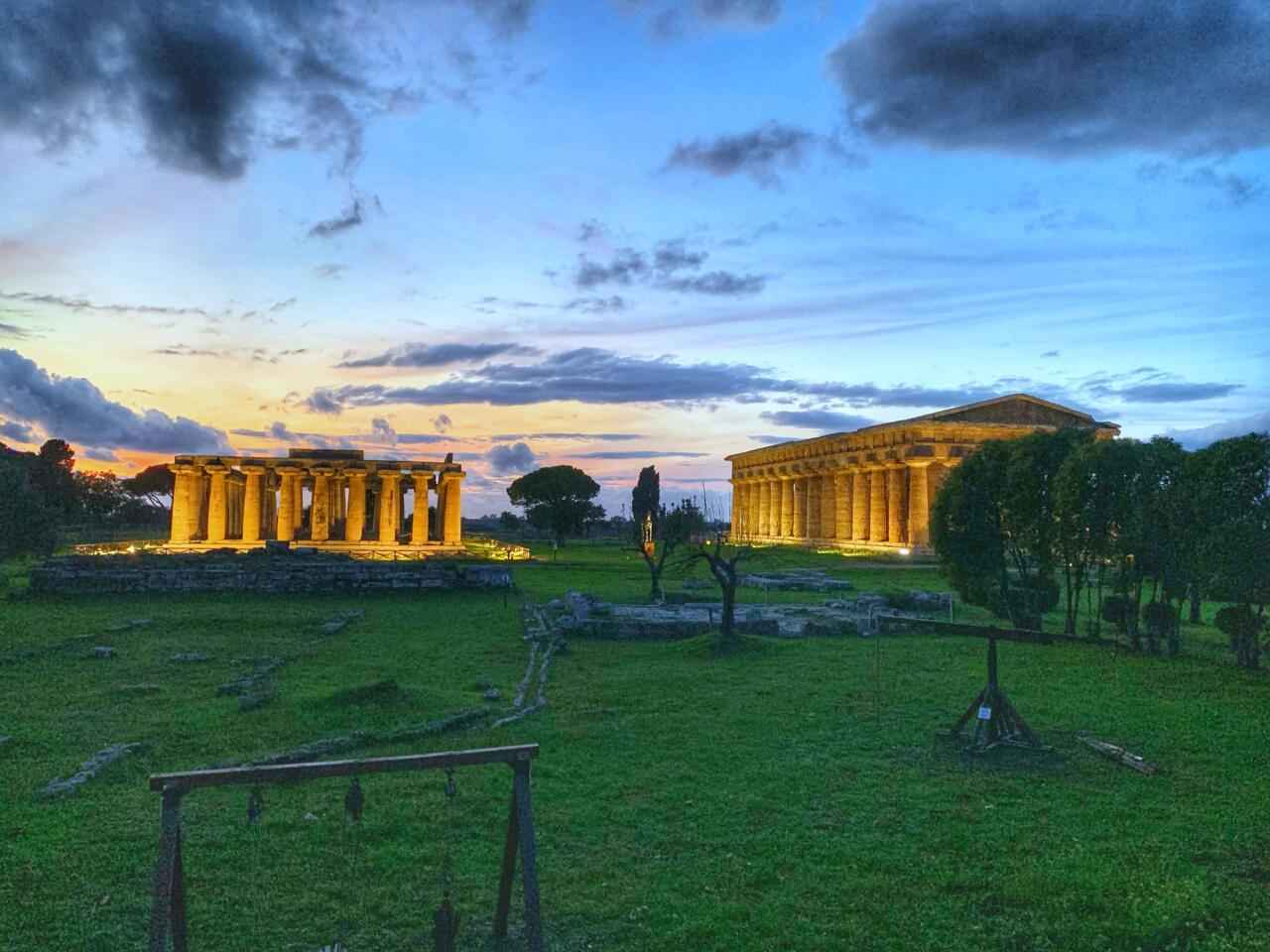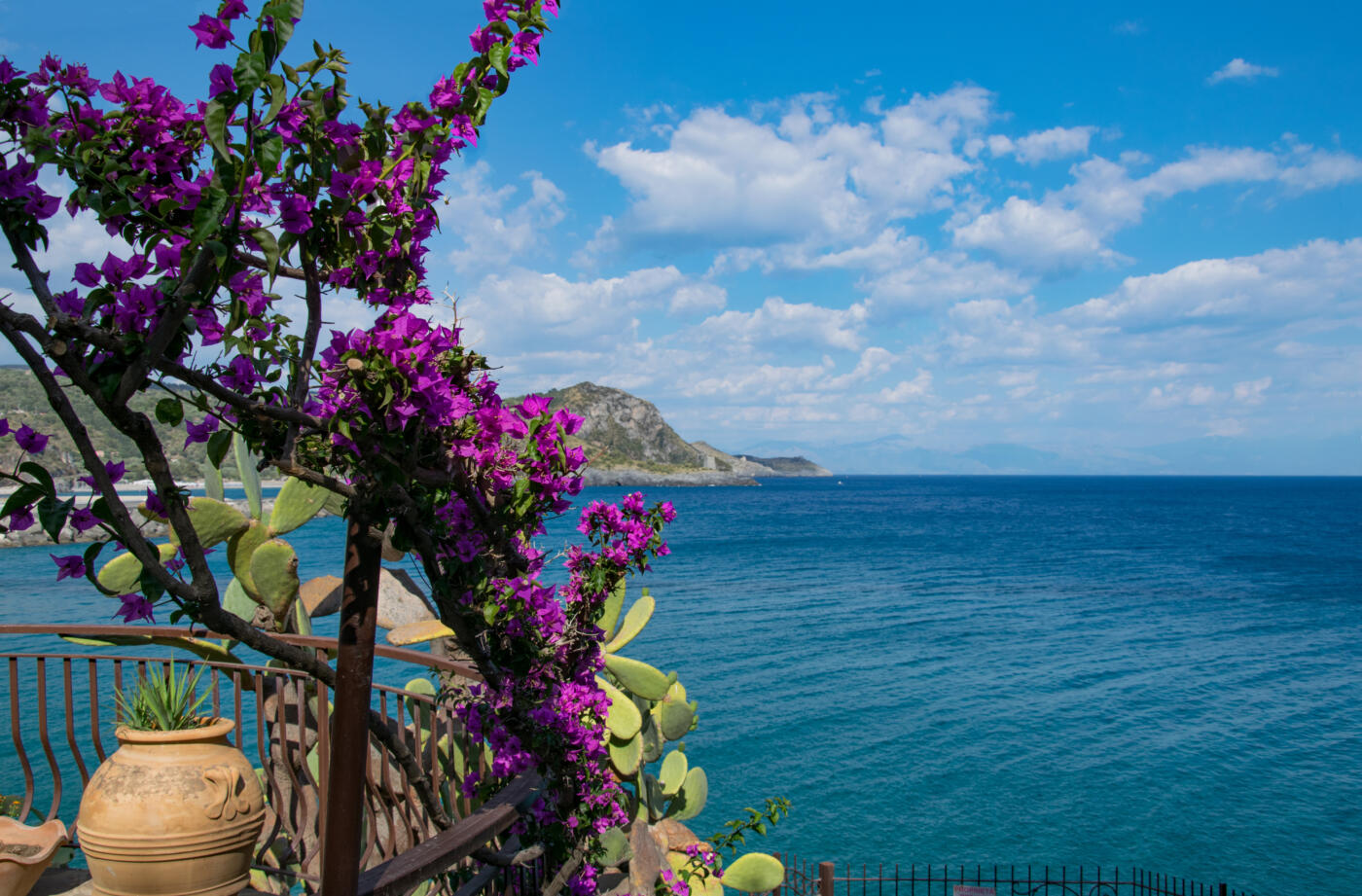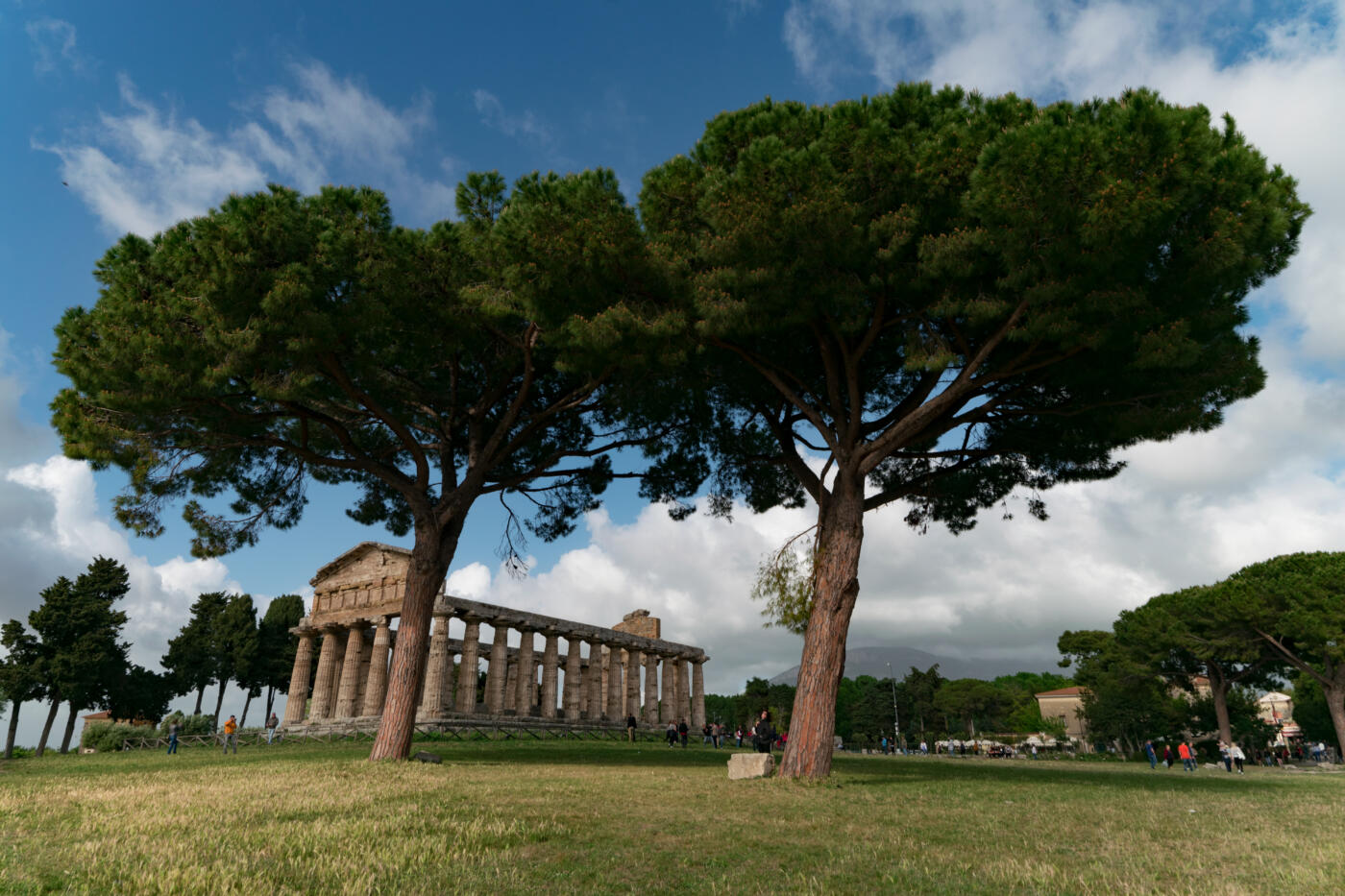
After exploring the historical residences along the Gulf of Naples, our journey continues onwards towards Irpinia and then on to the vast territory of the Cilento region, which is famously associated with the creation of the Mediterranean Diet, recognised by UNESCO as an Intangible Cultural Heritage of Humanity. This area features inland villages rich in history, a strong culinary tradition based on excellent local products, and a spectacular coastline, where it is possible to witness some of the most stunning sunsets imaginable. We begin our journey in Naples’ city centre, from where you should take the road to Nola, an ancient town that was the birthplace of Giordano Bruno and the place where Emperor Augustus died fifteen centuries earlier. In Nola, you can explore several archaeological sites, the Brick Amphitheatre and the Orsini Palace, a fortress that was built around 1460 and that has been the seat of the courthouse since 1994. From here, take the road through Vallo di Lauro in the direction of Villa Pandola Sanfelice, which was transformed from a simple house into a grand villa in the 1700s. During the following century, it became a secret meeting place for liberal revolutionaries fighting against the Bourbon monarchy. You will then enter Irpinia, passing through the towns of Monteforte Irpino and Mercogliano, where we highly recommend you visit the Sanctuary of Montevergine, a national monument and one of Italy’s six territorial abbeys. Afterwards, head on to the town of Avellino, a good spot to stay overnight after discovering the historic centre and maybe visiting some of the renowned local wineries. Our top favourites include Mastroberardino in Atripalda and the glorious Feudi di San Gregorio in Sorbo Serpico. The former has a resort with accommodation facilities called Radici, located in the Taurasi wine region, while the latter offers dining at its San Gregorio Restaurant, with a number of places to stay close to the winery. Just outside Avellino is our second historical residence – Tenute Casoli in Candida. This estate likewise specialises in producing Irpinia wines such as Greco di Tufo, Taurasi and Fiano di Avellino, as well as cultivating hazelnuts and local varieties of apples using organic farming methods. The manor house, which originally belonged to the aristocratic Iorio family, now has a winery which is open to visitors and offers tastings of wines paired with hazelnuts, cured meats and cheeses. It is also possible to stay overnight in one of the two holiday homes located within the property.

From here, head towards Salerno along the fast road, passing firstly through Serino, a spot from which you can ascend Mount Terminio in the summer months to enjoy cooler temperatures, and then Solofra, a town renowned worldwide for its expertise in leather industry, specialising in the transformation of lamb and sheep skins into high-quality leather goods and winter clothing. If you happen to be on the lookout for winter outerwear, Solofra is a great place to stop, and the D’Arienzo Collezioni shop could be just the ticket\. The city of Salerno is easily accessible should you wish to take a detour there, but for this itinerary, we have chosen to focus on the Cilento region, particularly the agri-food products that define this area. The first leg of our itinerary is in the Piana del Sele, which is famous for buffalo mozzarella with the protected designation of origin (PDO) certification. It is produced, for example, by one of our historical residence’s, Taverna Penta, in Pontecagnano. This estate has been in the Morese family for generations and was once a coach resting station. The old storage rooms and stables have been converted into facilities for making and selling their highly regarded mozzarella, yogurt, puddings and ice creams from buffalo milk. One of the most exciting things about visiting Taverna Penta is that, in addition to purchasing their products, you can also take a guided tour to learn about the production stages of the buffalo mozzarella process, including a tasting or light lunch, followed by a visit to their yogurt yogurt-making facility. The Piana del Sele is dotted with numerous small and medium-sized dairies, but the rich history of this area is closely tied to the presence of an extremely significant and quite unmissable site: the archaeological park of Paestum. You should dedicate at least half a day to exploring the ruins of this ancient Greek city, particularly its incredibly imposing sacred buildings, including the Temple of Hera, the Temple of Neptune and the Temple of Athena.
Built in the 6th and 5th centuries BC, they are considered to be some of the best-preserved examples in the world, alongside those in Athens and Agrigento.

The Archaeological Museum is also well worth a visit, together with a whimsical contemporary addition, created by artist Mimmo Paladino: a sculpture of Pegasus, the winged horse said to have been birthed by Medusa, made using sand taken from the beaches of Paestum. Our next stop is Giungano, a village beloved by hikers and trekkers due to the well-trodden and poetically named ‘Sentiero della Sposa’ or ‘Bride’s Trail’ walking route. This is also the location of Domus Laeta, now an exclusive wedding venue. The idea of offering personalised packages for couples and their guests, with ceremonies and banquets tailored to reflect the traditions of the bride and groom, was the brainchild of Camilla Giannuzzi Savelli, who has restored the family home and its history, offering private events that honour its heritage. The Domus’s rustic past is reflected in the furniture and household objects and even old work tools on display, such as an ancient wooden press used for pressing olives. Family memories are preserved in the furnishings and in the extensive archive and library, which houses around 2,000 books. The residence also serves as a bed and breakfast, with rooms adorned with period pieces and offering views of either the valley or the historic centre. From Giungano, continue on your route to Trentinara, a small town known as the ‘Terrace of Cilento’ because of its staggeringly lovely, panoramic views of the Gulf of Salerno. For fine dining enthusiasts, this area is home to one of the restaurants in southern Italy which is most highly praised by the Michelin Guide. Tre Olivi at the Savoy Beach Hotel in Capaccio Paestum holds two well-deserved Michelin stars in the 2024 edition. A great alternative is Nonna Sceppa, a classic trattoria much loved by gastronome and wine critic Luigi Veronelli. Proceeding south, you will arrive at the seaside town of Agropoli, whose old hilltop centre was formerly protected by the Aragonese Castle. This town serves as a gateway to the lesser known, meandering and even more picturesque parts of Cilento.

Before driving down to Santa Maria di Castellabate, which was put firmly on the map after it became the cinematic location for the Italian film ‘Benvenuti al Sud’, we have two more historical homes to show you. The first is Borgo Riccio in Torchiara, just a short distance from Agropoli. Nestled in a three-hectare park, this residence was once owned by the Riccio family. It was restored in the 1990s and is now a charming place to stay, offering two houses and three dovecotes for guests, as well as a providing a multi-functional space for the hosting of conferences and private events. From here, visitors can enjoy a stroll along the scenic Greenway, a 12-kilometre path that showcases the architectural and landscape beauty of the village of Torchiara. The second home is Torre Volpe in Prignano Cilento, standing amidst the charming old houses of the ancient Borgo di Melito. This medieval tower-house welcomes visitors wishing to experience Cilento in a unique way, and indeed the property organises wine tastings and local product samplings for small groups during their stay.
From here, your journey through Cilento could continue on for quite some time, stretching as far down as the Archaeological Park of Velia and eventually Capo Palinuro, the legendary site where Aeneas’ helmsman was reported to have fallen into the sea. En route, Pollica is a place you should not miss, because of its importance in gastronomic terms. This village became the global reference point for the Mediterranean diet as it was here, in the locality of Pioppi, that the American physician Ancel Keys lived for many years. Keys, who developed the K-ration during World War II, later studied the benefits of the Mediterranean lifestyle, closely followed by the Cilento population. He embraced this way of eating himself, with remarkable results, as he lived to be over 100 years old. A fitting conclusion for your journey is to be found near Capo Palinuro at Pisciotta, where we suggest you reserve dinner at the celebrated Trattoria Angiolina. The house speciality here is spaghetti with menaica anchovies, so named after the wide-mesh nets used to catch anchovies in such a way that the smaller fish are not captured, thereby better preserving the fish population.